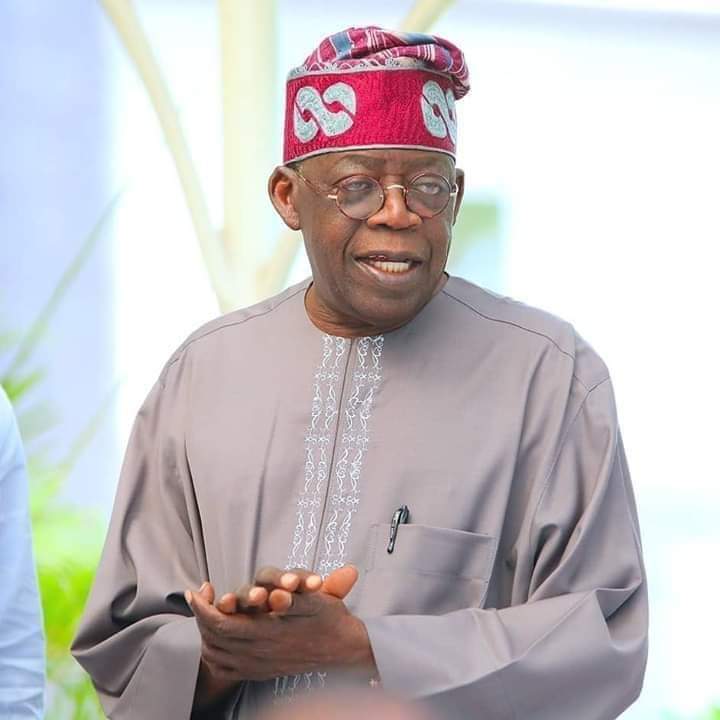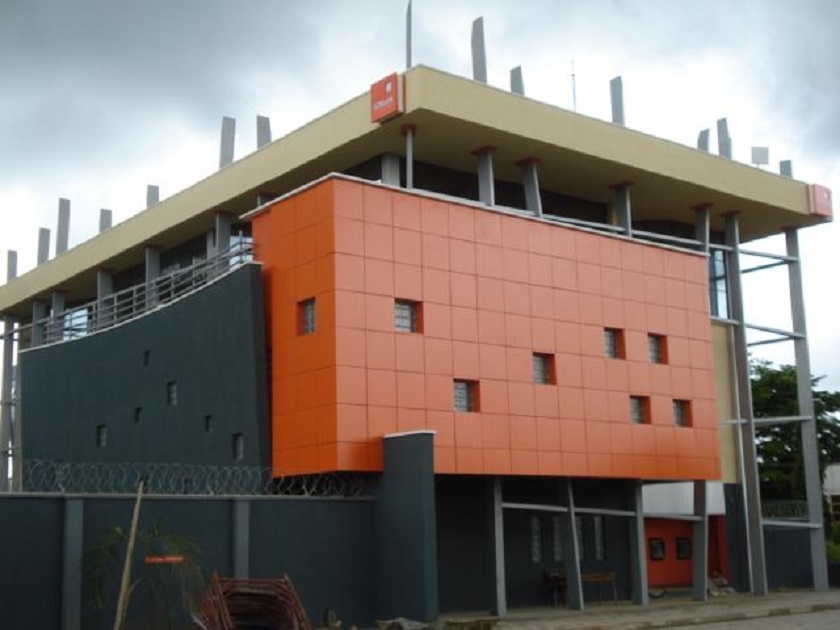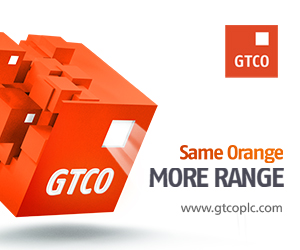Feature/OPED
Esan Traditional Marriage and Taboos

By Prince Kelly O. Udebhulu
Esan people value their children, male or female, this is why unlike some cultures; the bride price is very low. The payment of bride price is vital to the conclusion of marriage notable under Esan native law, which like any other customary law marriage in Nigeria; it is recognized under the Marriage Act.
The impression being that Esan people do not sell their daughters in marriage, the requested amount for bride price is usually meagre; N24 (representing 24 cowries or British pounds used in the pre-colonial and colonial days).
A huge sum is usually presented these days, from which the prominent members of the bride’s family would remove a small amount and refund the balance to the groom for his wife, their daughter`s up keeping.
A calculated message to the groom that she is still considered a family daughter even though she is married, hence the tradition that at death, the corpse of Esan woman is returned to her family to be buried with her ancestors.
We have two major types of marriage in Esan Land:
-Monogamy- A marriage of one man to one woman,
-and Polygamy- A marriage of one man to two or more wives.
Marriage also known as matrimony is a socially or ritually recognized union or legal marriage contract between two individuals that establish obligations and rights between them and their children and in-laws.
However, the concept of marriage is not a new practice and it has been a part of our society since ancient times. Marriage is a universally accepted social institution, but the types of marriages practiced in the world can be diverse. Different societies and cultures have different religious beliefs and practices for the recognition of a relationship.
In the days of our fore-fathers in Esan tradition and culture, a woman married another woman (Stylish lesbianism) but the only different to the modern day lesbianism is that the wife (woman) had children through a calculated and arranged mechanism and channel whereby an opposite sèx visited nocturnally or vice-versa in a more clandestinely MOU with the husband (woman) and children from the wife answered the husband’s (woman) name as surname. Not adopted children as in the modern days lèsbianism. It mainly happened then under a scenario whereby an acclaimed wealthy woman in the community happened to be a barren woman and she decided to have children of her own so that her lineage continued after her demise.
It worthy of note that all due responsibilities and accountabilities as a wife and husband with the exception of having sèxual intercourse abound in this type of marriage.
Just as it is difficult to ascertain the actual opposite sèx who fertilized the wife of a barren man as often happened under and after a mutual family rite (ritual) that allowed the said wife of a barren man to extend her legs to outsider besides her betrothed husband, so it was under the practice of woman married woman in those days in our history.
Traditional marriage is usually an arrangement between two families as opposed to an arrangement between two individuals.
Accordingly, there is mutual requirement from the bride and bridegroom to make the marriage work as any problem will usually affect both families and strain the otherwise cordial relationship between them.
The man usually pays the bride-price and is thus considered the head of the family. Adultery is acceptable for men, but forbidden for women.
Marriage ceremonies vary among Esan Clans
Prior 1897, girls were generally regarded as ready for marriage between the ages of 15 through 18. Courtship can begin among the individuals during the trip to the river to fetch water or during the moonlight play – EVIONTOI.
Sometimes parents actually go looking for a wife or husband for their children. This led to the BETROTHAL SYSTEM where marriage were conducted with or without the consent of the individuals involved. Sometimes such betrothal, took place when a baby girl was born. Suitors would begin to approach the parents by sending a log of wood or bundle of yam to the parents of the child. You are likely to hear statements such as -” Imu’ Ikerhan gboto”-I have dropped a log of firewood. When a boy decides to get married and the parents have accepted the bride as a prospective daughter-in-law, messages go up and down between the two families. This is called IVBUOMO-SEEKING FOR A BRIDE.
Series of investigations are conducted by both families – about disease, scandals and crimes which may affect the families. The term of the marriage which of course may include the pride-price would be settled in some families. Gifts for mother of the bride and IROGHAE- members of the extended family would be part of the settlement. Then a date would be set for the ceremony which would take place in the home of the woman’s family. This was called IWANIEN OMO in the old days the go-between for the two families must be somebody well known by both families. There would of course be a lot of merriment on the day of marriage when the bride and the bridegroom are presented openly to the two families.
Kola nuts and wine are presented. The OKA EGBE of the woman’s family would normally preside over the ceremony. Prayers are said and kola nuts broken at the family shrine. Rituals vary from family to family. The woman always sits on her father’s lap before she is given away. Amidst prayers, laughter and sometimes tears, the woman would be carefully hoisted on the lap of the OKA EGBE of the bride’s family.
Many years ago, the woman would be sent to the bridegroom house about thirteen days after IWANIEN OMO and gingerly hoisted either on her husband’s lap or the OKAEGBE of his family. They are done immediately nowadays in the home of the bridegroom. The bride, now known as OVBIOHA would be led by her relatives to the husband’s house with all her property meanwhile the family and friends of the bridegroom are feasting, drinking, singing and dancing while waiting for the bride to arrive.
As the family and friends of the bridegroom awaits the OVBIOHA, messages will arrive suggesting that there are UGHUNGHUN-barriers on the road. The bridegroom has to remove the barriers by sending money to the party, bringing the wife to him or else the wife will not arrive. As they approach the house of the bridegroom, you can hear the echo of OVBIOHA GHA MIEN ARO-ARO, meaning “Bride! Be proud/ the Bride is proud.” Arrival at the bridegroom’s house is immediately followed by the ceremony of IKPOBO-OVBIOHA-washing of the bride’s hands. A bowl of water with money in it would be brought out. A woman in the groom’s family, sometimes his senior wife would bring out a new head tie, wash the hand of the Ovbioha in the bowl and dries her hand with the head tie. Both the new head tie and the money in the bowl belong to the bride.
A few days later, the bride would be taken to the family altar and prayers are said for her. She undergoes what is called the IGBIKHIAVBO ceremony-beating of OKRO on the flat mortar. This would be followed by a visit by the bride’s mother-in-law and other female members of the family to the newlywed, if they are not living in the same house. She would demand the bed spread on which they both slept when they had their “first sèxual relationship” after the wedding and if the bed-spread was stained with blood, the bride was regarded as a vìrgin and as such she would be given many presents including money. If it is proven that she was not a vìrgin, then the preparation for the ceremony of IVIHEN-OATH TAKING ceremony would be set in motion.
First, she has to confess to the older women, the “other men” in her life before she got married. The husband would never be told any of her confessions, then, she would be summoned to the family shrine early in the morning, without warning to take an oath of FIDELITY, FAITHFULNESS, TRUSTWORTHINESS, HONESTY ETC, to her husband and family. This ceremony is the equivalent of the oath people take in the church, mosque or marriage registry. Once the oath taking ceremony is over, she would be fully accepted back into the family and immediately becomes married not only to her husband but to the family and sometimes to the community.
Christianity, Islam and Westernization of today have weakened the Edo traditional system of marriage. The traditional ceremony is sometimes done the same day with many of the rituals avoided in the name of Christianity or Islam and many women would rather die than take the oath we described above. It was the oath that kept Edo women out of prostitution for many years; thus making the Edo women in general to be regarded as very faithful, trustworthy, honest with strong fidelity to their husbands making neighbouring tribes want them as wives. It also made divorce on the ground of adultery, less common in those days.
TABOOS WHEN YOU MARRY AN ESAN MAN
There are “don’ts and dos” in Esan marriages but some are enumerated below.
When a woman is married to an Esan man, it is an abomination for another man to touch her wrapper, else it is considered as though she has committed adultery unless the married woman shouts at the man or reports to her husband.
– When a woman commits adultery, she will lose her children and her life as repercussion for the abominable act unless she confesses and as restitution, she is striped completely unclad, her head is shaved, a part of her private part is shaved, one of her armpits is shaved and both of her hands are tied behind her, while a basket full of trash is placed on her head. She is then paraded around the community by other women.
– If this is not done and the woman goes ahead to cook for her children, her children will die one after the other including her. If she also confesses to her husband and out of love or pity her husband conceals the confession, he will die within a week, if he eats a meal cooked by the woman.
– It is a taboo for another man to cross an outstretched legs of a married woman else it is considered as though she already had sèx with the man.
– A married woman cannot steal her husband’s money in Esan land as it is seen as an abomination. She must tell him about it.
– It is considered an abomination for a man to sit on the matrimonial bed of an Esan couple as it is seen as a taboo.
– It is also an abomination for a woman to spit on her husband under any circumstance. If she does, she must sacrifice a fowl to appease him but the man can bathe his wife with his own spit.
– It is seen as an abomination for an Esan man to use the same bathing bucket with his wife but due to widespread Christianity, this taboo has almost gone into extinction.
– The husband of a woman who just gave birth must stay away from her sèxually for three months as she’s considered unclean because of the after delivery blood she discharges.
On list of requirements to marriage, contact your would-be in-laws as it varies from family to family.
Ref: Dr. C. Okojie.
- Joy.
Esan historians.
Feature/OPED
If Data is the New Oil, Where is the Refinery?

By Timi Olubiyi, PhD
Internet users are growing at an unprecedented rate, and in Nigeria, for instance, internet users have expressed concerns and frustration over the data price increase in recent times, with many feeling its negative impact on their budgets and mobile smartphone usage.
Major networks such as MTN, Airtel, and Glo have seen a close to 50 per cent increase in Nigerian mobile data prices, with no known alternative available. This shows the significance of data and internet usage, highlighting its role in the digital age and the rapid growth of data and content creation across Africa.
From mobile phone data and e-commerce activities to social media interactions and government services, vast amounts of information are being created daily, which is accessible through internet usage.
The economic and technological landscape of Africa has been undergoing significant evolution recently. The continent is inhabited by over 1.4 billion individuals, and a larger portion of them create, use, and feed on data— which is a digital transformation.
The convergence of rising mobile phone usage, enhanced internet accessibility, and a youthful, technologically adept demographic has positioned Africa at the forefront of global discussions around technology innovation and data generation.
Recently, the phrase “data is the new oil” has gained significant traction in discussions related to technology, business, and the digital economy. But it is public knowledge that when it comes to oil, its availability is limited to certain areas of the world.
On the other hand, tech giants like Google, Facebook, Netflix, Amazon, Microsoft, and Apple control most of the world’s data.
According to a study by Sandvine in 2021, these companies are responsible for about 57 per cent of global data flow, and they have all commodified data. The huge amount of data controlled by these mega-companies is bigger than most small businesses and corporations. But, anyway, this would be another story piece for another time.
In the view of the author, if we want to know if data is really the “new oil”, we need to first look at how it builds value. Data by itself is not useful, just like in the case of oil. Raw data, without any processing or analysis, is merely a collection of information that requires interpretation.
For instance, an online store might keep track of what customers do, like what links they click on, how long they stay on product pages, and what they bought in the past.
However, this data remains mostly useless until it undergoes processing, analysis, and transformation into actionable ideas. Business managers in Africa should follow this path and should adhere to a mindset of ‘facts superiority over opinion’.
As businesses expand, an increasing number of individuals express ideas regarding the actions to be undertaken. However, it is beneficial to employ a data-insight mentality. All company metrics can be tested, measured and improved upon.
It is important to note that business owners/managers must have real-time access to the most important data in their business. Understanding which Key Performance Indicators (KPIs) affect revenue and profit is significantly more crucial than the revenue and profit figures themselves.
When data is cleaned up and analysed, it becomes really useful. Similar to refining oil to produce petrol, diesel, and other products, processing data yields beneficial outcomes. This is where Google and Facebook shine. They have put a lot of money into technologies like machine learning and big data analytics that can turn huge amounts of raw data into personalised ads, recommendation engines, and models that can predict the future. In this way, they make money for both their users and their owners.
In Africa, the idea of “data as the new oil” is particularly appealing because it could help the continent skip ahead in the normal stages of economic growth. Mobile phones let African countries get around the need for landline infrastructure.
Similarly, data technologies could help African economies get past older, resource-heavy ways of growing, leading to new ideas and long-term growth in fresh ways. In agriculture, for instance, data analytics and satellite imaging can help farmers figure out how the weather will behave, get the most out of their crops, and make harvest supply lines work better. Data-driven solutions in healthcare, like electronic health records (EHRs) and predictive analytics, can help find diseases, control outbreaks, and make healthcare better.
In the same way, data-driven education platforms can give students personalised learning experiences and give teachers and managers useful information about how students are doing and what they need. More so, businesses could be data-driven by setting up special internal research units on data, where insights can be generated to improve on decision-making.
Looking ahead, there are evident similarities between data and oil; much like crude oil, data is valuable. Data is not a naturally occurring resource like oil; it is a by-product of human activity. Oil is a limited resource, whereas data is plentiful and perpetually increasing. Raw data must be processed and analysed to derive significant insights and facilitate informed decision-making.
This is where artificial intelligence (AI) is relevant. AI acts as the ultimate data refinery, enabling the conversion of extensive information into meaningful insights. In contrast to oil, which is extracted and processed by a limited number of firms, data is more extensively disseminated, including various stakeholders in its collection, analysis, and utilisation.
Anticipating the future, data will probably witness ongoing advancements in many domains because it is a strategic asset for business and economic growth. With it, people, organisations, and governments can make better decisions. Good luck!
How may you obtain advice or further information on the article?
Dr Timi Olubiyi is an entrepreneurship and business management expert with a PhD in Business Administration from Babcock University, Nigeria. He is a prolific investment coach, author, seasoned scholar, chartered member of the Chartered Institute for Securities and Investment (CISI), and a Securities and Exchange Commission (SEC)-registered capital market operator. He can be reached on the Twitter handle @drtimiolubiyi and via email: drtimiolubiyi@gmail.com, for any questions, reactions, and comments.
The opinions expressed in this article are those of the author, Dr Timi Olubiyi, and do not necessarily reflect the opinions of others.
Feature/OPED
Why President Bola Tinubu Has the Edge in Retaining Power in 2027

By Kenechukwu Aguolu
As the year 2027 draws closer, political manoeuvrings and calculations are already underway across Nigeria. The landscape is expected to shift, with new alliances and coalitions forming among political actors and parties. However, in my view, the chances of the current administration retaining power in 2027 remain high, and several compelling reasons support this assertion.
First and foremost, the All Progressives Congress (APC), the party currently in power, stands as the most formidable political force in the country. The APC boasts an unrivalled structure, a stable leadership, and the highest membership among all political parties. With the largest number of serving governors and National Assembly members, the party is firmly entrenched in all corners of the nation. These factors alone give the APC a significant advantage as it gears up for the 2027 presidential elections.
Under the leadership of President Bola Tinubu, the current administration has displayed a deep sense of patriotism and a clear vision for Nigeria’s future. While the reforms introduced by the government came with initial challenges, these difficulties are gradually easing, and the results are becoming increasingly evident. Prices of goods and services are steadily dropping, and the Naira is beginning to show signs of recovery.
The government’s efforts to diversify the economy are also bearing fruit, with initiatives such as the revival of the Ajaokuta Steel Company and ongoing reforms in the mining sector. By 2027, the dividends of these economic reforms will be more apparent, and the public will be able to feel their positive impact. These successes will work in the administration’s favour and could solidify the APC’s hold on power.
Infrastructure and security have been at the forefront of the government’s priorities. Significant improvements in power generation have already been made, and efforts to tackle insecurity have begun to show positive results, albeit gradually. Furthermore, the government is investing heavily in road construction, including vital projects like the Lagos-Calabar Expressway.
These infrastructural developments are not just for show—they will stimulate economic activities across the country, create jobs, and enhance the living standards of Nigerians. If these trends continue, it will be hard for any political opponent to deny the progress made under the current administration.
Perhaps the most critical factor in the APC’s favour is the leadership of President Tinubu himself. With his personality, widespread followership, and experience, he stands as a political giant in Nigeria. His leadership has been marked by a strong sense of purpose and determination, and his vast network of supporters spans across different regions of the country.
While some may argue that time will tell who will emerge as a viable challenger to President Tinubu, it’s difficult to imagine any politician currently being touted as a credible candidate who could match his national appeal and charisma. The nature of Nigerian politics means that any potential challenger would need to command significant nationwide support to pose a real threat to the APC’s grip on power.
Looking ahead to the 2027 presidential election, I believe it will be much easier for President Tinubu to secure re-election than it was in 2023. His leadership performance, coupled with the robust support of the APC, places him in a strong position for victory. While unforeseen events may shape the political landscape over the next few years, the factors already in play suggest that the current administration is well-positioned to retain power.
Feature/OPED
Collaboration Made Easy Using a Work Management Platform

By Firas Jadalla
Effective collaboration between security operators, teams, and other departments is essential for the smooth functioning of any organization. However, as organizations grow in complexity, it becomes increasingly challenging for teams to coordinate. Factors such as staffing shortages, high turnover rates, and outdated collaboration tools exacerbate these challenges.
When staff rely on multiple disconnected tools for dispatch, reporting, and task tracking, operations often become fragmented, leading to delays and gaps in communication. In critical areas like safety and security, these inefficiencies can have serious consequences.
Work management solutions bridge these gaps by managing, tracking, and documenting activities, streamlining processes, and fostering real-time collaboration. Built specifically for security teams, these solutions enhance communication, boosts productivity, and improves overall operational efficiency through workflow automation.
Organizations in Africa and the Middle East operate in high-security environments where seamless collaboration is essential. A robust work management platform enables swift response and coordination across complex operational landscapes.
This growing need for integration is driving more organizations to align their security and IT departments. According to a recent Genetec report, 78% of end users in the META region indicate that these departments now work collaboratively, reflecting a shift toward a more unified security approach.
Overcoming barriers to effective collaboration
Over time, many organizations accumulate a patchwork of databases, spreadsheets, and standalone systems to communicate, create reports, and track activities. Some still rely on outdated paper-and-pen processes, which aren’t only time-consuming but also prone to errors. These disjointed methods hinder information sharing and coordination.A digital work management platform consolidates these fragmented systems, offering teams a unified view of activities accessible on both desktop and mobile devices. To take full advantage of their security system data, security teams need to consider more than a generic work management solution.
An ideal work management solution for security teams should accommodate security activities such as guard tours, patrols, and maintenance inspections. It should also seamlessly integrate with existing security systems. For instance, a video operator should be able to create a work request with an attached camera snapshot and route it to the appropriate team in just a few clicks. To ensure trustworthy audits and reporting, the work management system should be built with strong cybersecurity measures and ensure that data can’t be manipulated after the fact by applying blockchain principles.
Benefits of work management systems
Implementing a work management system can transform security operations in several ways:
- Improved Communication: Teams gain real-time visibility into task progress, responsibilities, and pending assignments. Updates and alerts can be shared seamlessly to request assistance or provide situational awareness.
- Enhanced Collaboration: Every team member contributes to shared goals rather than isolated tasks. Custom API integrations can connect with other systems, such as employee apps, further fostering teamwork.
- Time Savings: Built-in reporting tools automate activity logs and compliance audits, freeing up time for other critical tasks.
- Operational Efficiency: Routine tasks, incident management, and resource tracking are streamlined. Tasks are assigned to personnel with the appropriate skills, tools, and knowledge, ensuring readiness and precision.
- Workflow Automation: Automations simplify recurring tasks, such as setting reminders, generating reports, or notifying team leads when new requests are added.
- Resource Optimization: Features like work ticketing and asset management enable efficient resource allocation and management of internal and external requests.
- Mobile Support: Field officers benefit from mobile apps that enhance situational awareness, communication, and access to standard operating procedures on the go.
Today, governments in Africa, for instance, are heavily investing in smart security solutions as part of their national digital transformation strategies. A centralized work management platform not only supports these efforts but also helps businesses align with evolving security regulations, ensuring compliance and streamlining reporting processes.
Tips for successful implementation
Every organization has unique workflows, so selecting a customizable work management system is crucial. It’s important to choose a solution that’s customizable and intuitive to minimize the need for extensive training.Integration is another key factor.
A platform that deeply integrates with your existing security ecosystem provides a cohesive view of operations and eliminates the need for manual data transfers or redundant processes.A well-designed work management system can break down silos, empower teams, and boost efficiency. To ensure a successful deployment, adopt a lean and agile approach: start small and gradually incorporate more features as your team becomes comfortable with the platform.
With initiatives like Kenya’s Konza Techno City, Nigeria’s Eko Atlantic City and Abuja Centenary City, organizations are increasingly integrating AI-driven security and IoT-enabled monitoring into their operations. A work management platform with automation capabilities supports these advanced security frameworks.
Firas Jadalla is the regional director for Middle East, Turkey & Africa at Genetec Incorporated
-

 Feature/OPED5 years ago
Feature/OPED5 years agoDavos was Different this year
-
Travel/Tourism9 years ago
Lagos Seals Western Lodge Hotel In Ikorodu
-

 Showbiz2 years ago
Showbiz2 years agoEstranged Lover Releases Videos of Empress Njamah Bathing
-

 Banking7 years ago
Banking7 years agoSort Codes of GTBank Branches in Nigeria
-

 Economy2 years ago
Economy2 years agoSubsidy Removal: CNG at N130 Per Litre Cheaper Than Petrol—IPMAN
-

 Banking2 years ago
Banking2 years agoFirst Bank Announces Planned Downtime
-

 Sports2 years ago
Sports2 years agoHighest Paid Nigerian Footballer – How Much Do Nigerian Footballers Earn
-

 Technology4 years ago
Technology4 years agoHow To Link Your MTN, Airtel, Glo, 9mobile Lines to NIN














8 Comments